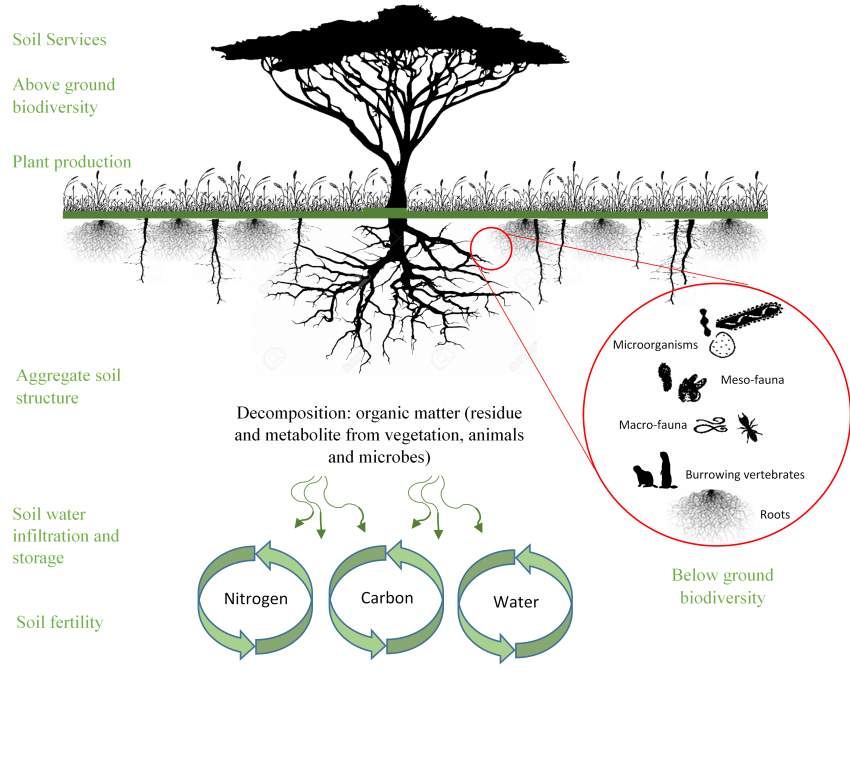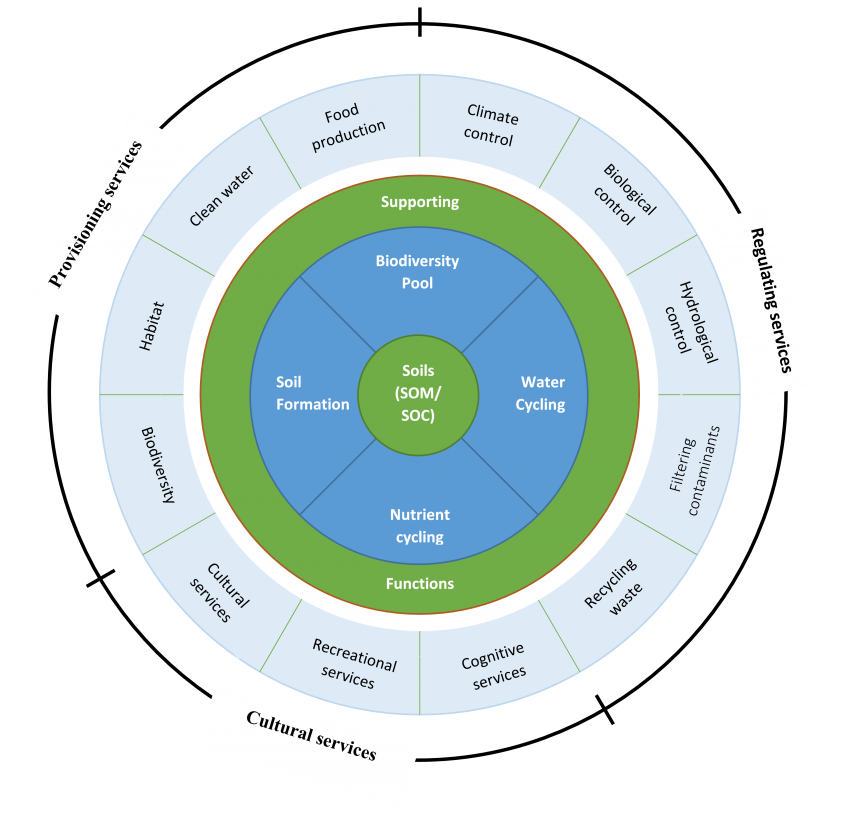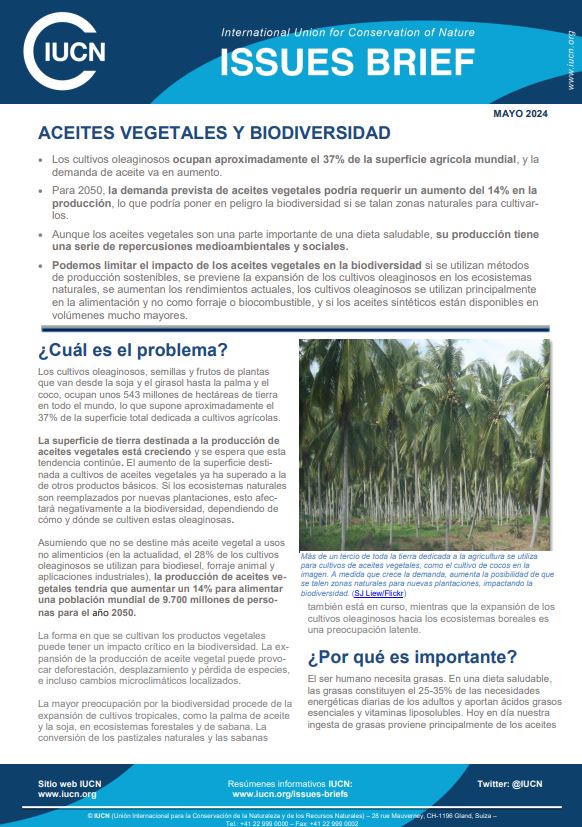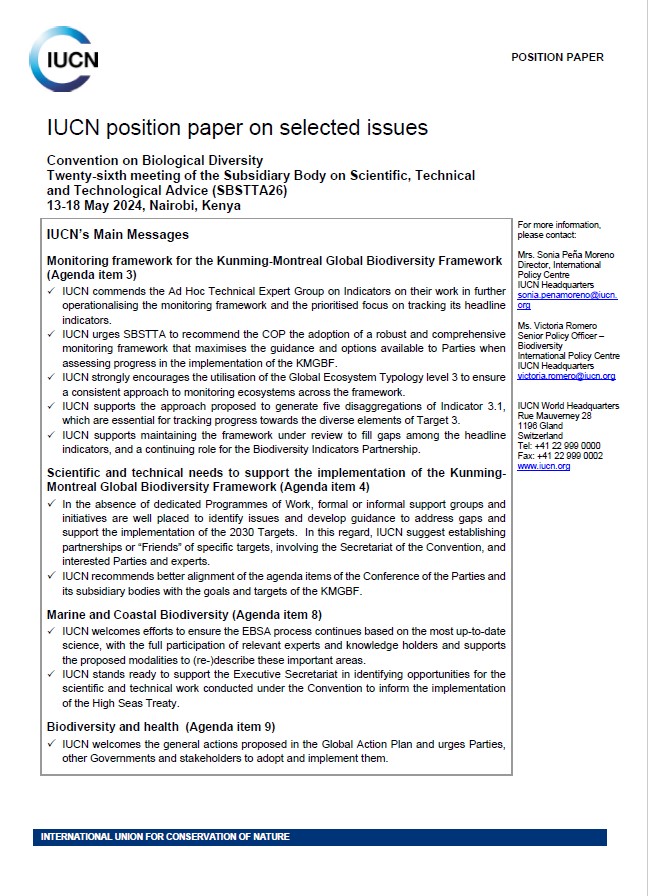
Conserving healthy soils
- The health of soils is dependent on the variety of organisms they contain, known as soil biodiversity.
- The amount of soil biodiversity determines the productivity of land, and thus the provision of food, water, and the regulation of climate.
- Current land degradation, chiefly due to chemical-fuelled, intensive agricultural production, is causing the loss of soil biodiversity, undermining the services provided by healthy soils.
- Governments should put in place policies and legislation, and promote land management practices which restore or preserve soil biodiversity.
May 2019

Components of soil biodiversity
Soil biodiversity drives the carbon, nitrogen and water cycles upon which life on earth depends. The productivity of land is therefore determined, to a large extent, by its soil biodiversity.
When land is degraded, it loses its soil biodiversity. Soil, which takes hundreds of years to form, can be eroded easily by wind and water when soil biodiversity is lost, causing land to produce less food, store less water and release carbon into the atmosphere.
About a third of the world's land has already been degraded, with two thirds of this degradation attributed to the agricultural sector, particularly chemical-fuelled, intensive agricultural production. According to the Assessment Report on Land Degradation and Restoration, produced by Intergovernmental Science-Policy Platform on Biodiversity and Ecosystem Services (IPBES), land degradation is currently undermining the wellbeing of at least 3.2 billion people, and represents an economic loss of 10% of annual global gross product.
By the year 2050, the global population is projected to surpass nine billion people. These people will be wealthier than ever and will demand more agricultural products, placing even greater demands on soils and undermining the long-term productivity of land. The Food and Agriculture Organization of the UN (FAO) has estimated that, based on current trajectories, the world only has 60 harvests left.
Why is it important?
Soil organisms regulate nutrient availability and uptake of nutrients by plants, maintain soil structure, and regulate hydrological processes. The loss of healthy soils reduces agricultural yields and could result in a food production shortfall of 25% by 2050. It is estimated that increasing soil biodiversity could contribute up to 2.3 billion tonnes of additional crop production per year, valued at USD 1.4 trillion.
Research in Argentina, India, and the West African Sahel has also found that crop yields can be increased by 20–70 kg/ha for wheat, 10–50 kg/ha for rice, and 30–300 kg/ha for maize with every 1000 kg /ha increase in soil organic carbon around plant roots.
Soil stores two thirds of the fresh water on the planet, and this function is determined by the level of organic matter in the soil. This water from soils supports 90% of the world’s agricultural production. The loss of soil biodiversity reduces the infiltration capacity of the soil as well as its capacity to store water, lowering food production and worsening the impact of drought. By 2025 an estimated 1.8 billion people will be living under water stressed conditions. One estimate suggests that the loss of 1 g of soil organic matter decreases soil available moisture by 1 to 10 g.
Climate change mitigation
Soil biodiversity represents one of the largest carbon stocks on Earth and plays a major role in mitigating climate change. It is estimated that there is more carbon stored in soils than the total carbon in both the atmosphere and above-ground vegetation. When soil is eroded, the carbon in soils is lost in the form of greenhouse gasses (GHGs), contributing to climate change. Increasing soil biodiversity could provide at least half of emissions reductions needed to limit the global average temperature increase to well below 2°C above pre-industrial levels as set by the Paris Agreement.

Soils and their ecosystem services and benefits
Target 15.3 of the UN 2030 Agenda for Sustainable Development aims to halt the world’s net land degradation. Healthy soils are both a natural resource and a public good underpinning sustainable development. The targets of the 2030 Agenda for food, water and energy security, biodiversity conservation and climate change mitigation all hinge on healthy soils. For instance, research has estimated that restoring only 12% of degraded agricultural land by 2030 could boost smallholders' incomes by USD 35-40 billion per year and help to feed an additional 200 million people annually, while increasing resilience to drought and water scarcity and reducing GHG emissions.
What can be done?
Farming practices that increase soil biodiversity include sustainably managing soil water and nutrients, controlling erosion, and maintaining groundcover. One such method is agroforestry, which involves planting trees alongside crops.

An agroforestry plot in Sudan
Governments should support land users in adopting sustainable land management practices, for instance through subsidies and other means. Land users should be paid for conserving this public good, rather than purely for the individual foods and other commodities they produce. Governments should also promote private investment in sustainable land management, for instance by facilitating finance opportunities for small and medium agribusinesses that engage in sustainable land management.
The services healthy soils provide should be incorporated into land-use planning. This planning requires input from a number of sectors to ensure the delivery of collective goals, for example food production, water supply and biodiversity conservation.
Governments should also strengthen land tenure and resource rights to enable local communities manage land more sustainably.
More information
Peter Laban, Graciela Metternicht, and Jonathan Davies. (2018). Soil Biodiversity and Soil Organic Carbon: keeping drylands alive. Gland, Switzerland: IUCN..




